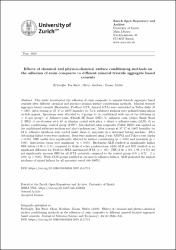| dc.contributor.author | Eyüboğlu, Tan Fırat | |
| dc.contributor.author | Olcay, Keziban | |
| dc.contributor.author | Özcan, Mutlu | |
| dc.date.accessioned | 10.07.201910:49:13 | |
| dc.date.accessioned | 2019-07-10T19:49:34Z | |
| dc.date.available | 10.07.201910:49:13 | |
| dc.date.available | 2019-07-10T19:49:34Z | |
| dc.date.issued | 2019 | en_US |
| dc.identifier.citation | Eyüboğlu, T. F., Olcay, K. ve Özcan, M. (2019). Effects of chemical and physico-chemical surface conditioning methods on the adhesion of resin composite to different mineral trioxide aggregate based cements. Journal of Adhesion Science and Technology, 33(16), 1836-1845. https://dx.doi.org/10.1080/01694243.2019.1614733 | en_US |
| dc.identifier.issn | 0169-4243 | |
| dc.identifier.issn | 1568-5616 | |
| dc.identifier.uri | https://dx.doi.org/10.1080/01694243.2019.1614733 | |
| dc.identifier.uri | https://hdl.handle.net/20.500.12511/1650 | |
| dc.description | WOS: 000470637600001 | en_US |
| dc.description.abstract | This study investigated the adhesion of resin composite to mineral trioxide aggregate based cements after different chemical and physico-chemical surface conditioning methods. Mineral trioxide aggregate based cements (Biodentine, ProRoot MTA, Imicryl MTA) were embedded in Teflon disks (N = 180). After storing at 37 degrees C at 100% humidity for 72 h, substrate surfaces were polished using silicon carbide papers. Specimens were allocated to 3 groups to be conditioned with one of the following (n = 15 per group): a) Adhesive resin (Clearfil SE Bond, CSE), b) Adhesive resin (Adper Single Bond 2, SB2), c) air-abrasion with 30 mu m alumina coated with silica + silane + adhesive resin (ALB), d) no surface conditioning, control group (CON). Microhybrid resin composite (Filtek Z250) was applied on the conditioned substrate surfaces and photo-polymerized. After storage at 37 degrees C at 100% humidity for 24 h, adhesive interfaces were loaded under shear (1 mm/min) in a universal testing machine. After debonding failure types were analyzed. Data were analyzed using 2-way ANOVA and Tukey's test (alpha = 0.05). SBS results were significantly affected by surface conditioning (p <0.05) and materials (p <0.05). Interaction terms were significant (p <0.05). Biodentine-ALB resulted in significantly higher SBS values (3.96 +/- 1.24) compared to those of other combinations, while ALB and SB2 resulted in no significant difference for ProRoot MTA and Imicryl MTA (p> .05). CSE (1.36 +/- 0.5- 1.98 +/- 0.76) did not significantly increase SBS for all MTA materials compared to the control group (0.8 +/- 0.52- 2 +/- 0.91) (p> 9.05). While CON groups resulted in exclusively adhesive failures, ALB presented the highest incidence of mixed failures for all materials tested (60-100%). | en_US |
| dc.language.iso | eng | en_US |
| dc.publisher | Taylor & Francis Ltd | en_US |
| dc.rights | info:eu-repo/semantics/openAccess | en_US |
| dc.subject | Adhesion | en_US |
| dc.subject | Air-Abrasion | en_US |
| dc.subject | Etch and Rinse Adhesive | en_US |
| dc.subject | Mineral Trioxide Aggregate | en_US |
| dc.subject | Self-Etch Adhesive | en_US |
| dc.subject | Shear Bond Strength | en_US |
| dc.title | Effects of chemical and physico-chemical surface conditioning methods on the adhesion of resin composite to different mineral trioxide aggregate based cements | en_US |
| dc.type | article | en_US |
| dc.relation.ispartof | Journal of Adhesion Science and Technology | en_US |
| dc.department | İstanbul Medipol Üniversitesi, Diş Hekimliği Fakültesi, Endodonti Ana Bilim Dalı | en_US |
| dc.authorid | 0000-0002-0308-9579 | en_US |
| dc.authorid | 0000-0002-2168-710X | en_US |
| dc.identifier.volume | 33 | en_US |
| dc.identifier.issue | 16 | en_US |
| dc.identifier.startpage | 1836 | en_US |
| dc.identifier.endpage | 1845 | en_US |
| dc.relation.publicationcategory | Makale - Uluslararası Hakemli Dergi - Kurum Öğretim Elemanı | en_US |
| dc.identifier.doi | 10.1080/01694243.2019.1614733 | en_US |
| dc.identifier.wosquality | Q3 | en_US |
| dc.identifier.scopusquality | Q3 | en_US |


















